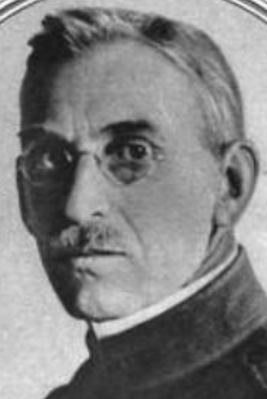Henry Jervey Jr. facts for kids
Quick facts for kids
Henry Jervey Jr.
|
|
|---|---|
 |
|
| Born | June 5, 1866 Dublin, Virginia |
| Died | September 30, 1942 (aged 76) Charleston, South Carolina |
| Buried | |
| Allegiance | |
| Service/ |
|
| Years of service | 1888–1922 |
| Rank | |
| Unit | 41st Infantry Division 11th Field Artillery Brigade |
| Wars | Philippine–American War World War I |
| Awards | Distinguished Service Medal Companion of the Order of the Bath Commander of the Legion of Honor Grand Officer of the Order of Leopold Member of the Order of the Crown |
Henry Jervey Jr. (born June 5, 1866 – died September 30, 1942) was an important American military leader. He became a Major General during World War I, a huge global conflict. He also wrote a book in 1917 called Warfare of the Future, sharing his ideas about how wars might be fought.
Early Life and Schooling
Henry Jervey Jr. was born on June 5, 1866. He went to The University of the South and finished his studies there in 1884. After that, he attended the United States Military Academy, often called West Point. He was a brilliant student, graduating first in his class in 1888.
Military Career and Achievements
After graduating from West Point, Jervey continued his education. Three years later, he finished at the Army Engineering School. This training prepared him for many important jobs.
He worked as a civil engineer with the U.S. Army Corps of Engineers. From 1898 to 1899, he helped improve the Mississippi River. Then, from 1899 to 1900, he managed rivers and harbors on Florida's west coast.
From 1901 to 1903, Jervey served in the Philippine–American War in the Philippines. After this, he returned to West Point. He worked there as an instructor, teaching future military leaders from 1903 to 1905.
In 1905, Jervey went back to engineering work. He managed rivers, harbors, and defenses in the Mobile District. In 1910, he was assigned to river duty in Cincinnati. He returned to teaching in 1915, this time at the Army War College.
In 1917, he was promoted to Brigadier General. He was assigned to the 66th Field Artillery Brigade, part of the 41st Infantry Division (United States). Soon after, he took command of the entire 41st Infantry Division. He led this division from September 20, 1917, to January 8, 1918.
After that, he briefly served as the leader of the U.S. Army Engineer School. In February 1918, he joined the War Department General Staff. There, he became the Director of Operations (G-3). This important role led to his promotion to Major General in October 1918. He received the Distinguished Service Medal for his excellent work as Director of Operations.
After World War I ended in November 1918, he returned to his previous rank of Brigadier General. He then took command of the 11th Field Artillery Brigade in Hawaii. Jervey officially retired from the military on April 10, 1922. In 1930, Congress restored his rank of Major General.
During his service, he wrote his book, Warfare of the Future. It was published in 1917, before the U.S. fully entered World War I. In the book, he thought the U.S. would not send many troops overseas if it fought a "first-rate" power. This idea was proven wrong just a few months later when many American soldiers went to Europe.
Family Life
On November 14, 1895, Henry Jervey Jr. married Katherine Irwin. They had one son together, named William Jesson Jervey. Sadly, Katherine passed away in 1929. Their son, William Jervey, also had a military career and became a Colonel.
Henry Jervey Jr. married again on March 19, 1930, to Henriette Postell.
Death
Henry Jervey Jr. died on September 30, 1942, in South Carolina. He is buried at Arlington National Cemetery. His first wife and son are also buried there with him.

